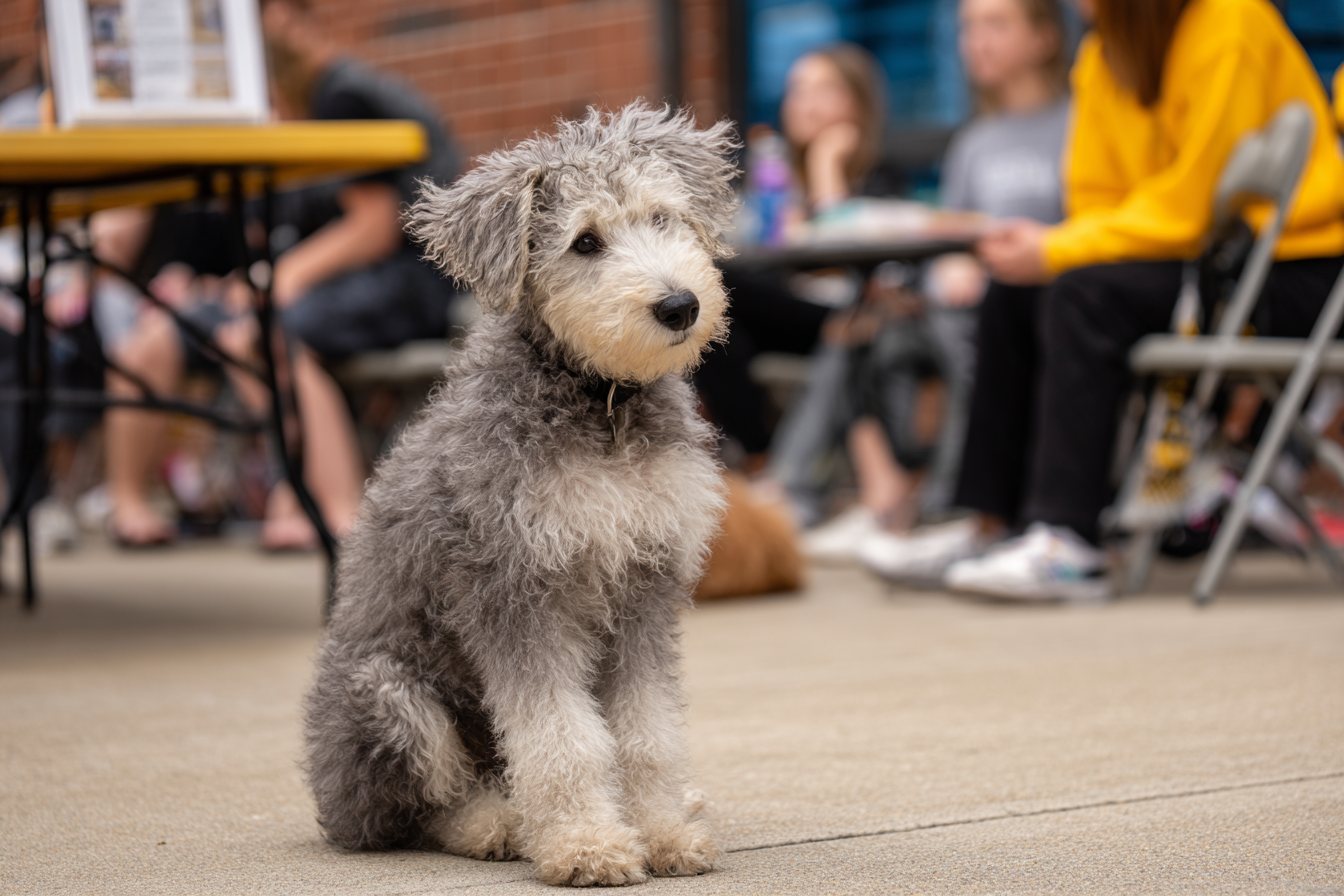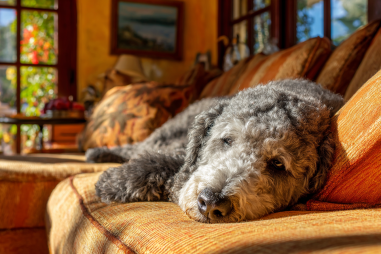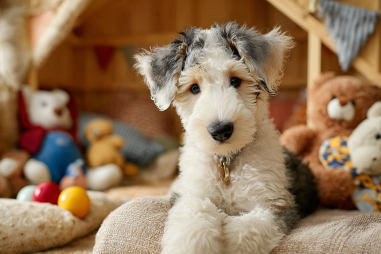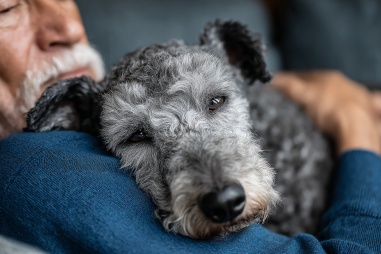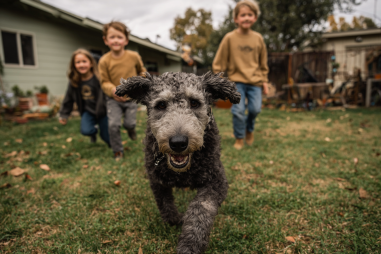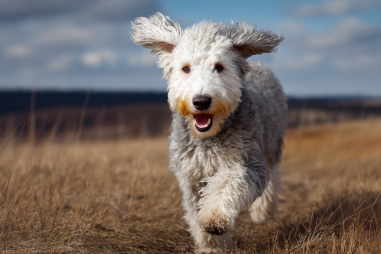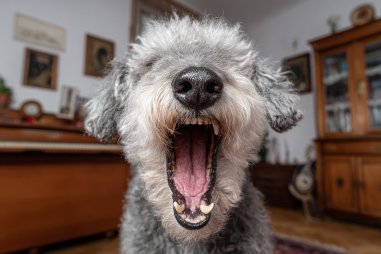Training a Bedlington Terrier can be an enriching journey for both you and your dog. Known for their distinctive lamb-like appearance and spirited nature, Bedlington Terriers possess a unique temperament that calls for specific training techniques. By understanding their personality, employing effective obedience training, and utilizing positive reinforcement, you can raise a well-mannered and happy companion. This guide delves into tailored strategies to foster good behavior and deepen the bond between you and your Bedlington Terrier.
Understanding Bedlington Terrier Temperament
Before diving into training, it’s crucial to grasp the characteristic temperament of Bedlington Terriers. These dogs are intelligent, energetic, and affectionate, often forming deep attachments with their families. They have a playful side but can sometimes display independent streaks or stubbornness, common traits in terrier breeds. Additionally, Bedlington Terriers are alert and can be quite sensitive, reacting quickly to their surroundings. This combination of traits means that successful training hinges on a balanced approach—firm yet gentle—tailored to engage their mind while respecting their emotions.
Because they were originally bred for hunting vermin, Bedlington Terriers possess a natural instinct to dig and chase small animals. Acknowledging this aspect of their nature helps you redirect their energy in productive ways during training. They thrive when provided with mental stimulation and physical activity, so making training sessions fun and challenging will keep them enthusiastic and focused.
Basic Obedience Training
Starting with basic obedience is the foundation for training your Bedlington Terrier. Focus on essential commands such as sit, stay, come, heel, and leave it. These commands not only improve control but also enhance communication between you and your dog. Given the breed’s intelligence, they generally pick up cues quickly, especially when training sessions are consistent and engaging.
Keep training sessions short but frequent—around 10 to 15 minutes at a time—to maintain your dog’s attention without overwhelming them. Use clear, consistent verbal cues paired with hand signals to reinforce learning. Patience is key, as some Bedlington Terriers may initially test boundaries or become easily distracted, especially in new environments.
Establishing structured routines early on helps your dog understand expectations. For example, practicing commands before mealtime or walks can make the behavior a regular part of their daily experience. Early consistency prevents unwanted habits from forming and sets a positive tone for future training endeavors.
Positive Reinforcement Methods
Positive reinforcement is the backbone of effective Bedlington Terrier training techniques. This approach encourages good behavior by rewarding your dog with treats, praise, or playtime immediately after they perform a desired action. Because Bedlington Terriers respond best to gentle encouragement over harsh discipline, positive reinforcement nurtures their willingness to learn and strengthens your bond.
Choose healthy and small-sized treats to keep your dog motivated without overfeeding. Pair treats with enthusiastic verbal praise and affectionate petting to create a well-rounded reward system. Toys or short play breaks are also great motivators for high-energy Bedlingtons, especially when they display eagerness for interactive play.
Avoid punishment or negative reinforcement methods, as these can cause stress or fear, which are counterproductive to learning. Instead, redirect unwanted behaviors by offering alternative actions and rewarding those promptly. This way, your Bedlington Terrier learns to associate good behavior with positive outcomes.
Addressing Common Behavioral Challenges
Like any breed, Bedlington Terriers can present certain behavioral challenges if not properly managed. Common issues include excessive barking, digging, separation anxiety, and stubbornness. Understanding these tendencies allows you to proactively address them through targeted training strategies.
- Excessive Barking: Bedlingtons are naturally alert and may bark to signal strangers or unusual noises. Teach your dog the “quiet” command, rewarding silence with treats and calm praise. Ensure they get enough physical and mental activity to reduce boredom that often triggers barking.
- Digging: This natural instinct can be redirected by providing designated dig areas or by enriching their environment with plenty of exercise and puzzle toys.
- Separation Anxiety: Gradually increase the time spent apart while offering comforting toys or background noise to ease their stress. Training “stay” and “wait” commands inside the home also builds their confidence during your absence.
- Stubbornness: Use consistent routines and positive motivation to gently lead your Bedlington Terrier. Avoid power struggles and instead make training enjoyable through games and rewards.
Socialization Practices
Effective socialization is vital to ensure your Bedlington Terrier grows into a well-rounded and confident dog. Early exposure to different environments, people, and other animals helps prevent shyness or aggression. Begin socialization during puppyhood, gradually introducing your dog to new sights, sounds, and experiences in a controlled and positive manner.
Take your Bedlington Terrier on walks in various neighborhoods, invite friends over for supervised visits, and arrange playdates with other dogs that have stable temperaments. Enroll in puppy classes or group training sessions to enhance social skills and leash manners. Keep interactions positive and monitor your dog’s comfort levels, stepping back if they seem overwhelmed.
Socialization not only reduces fear-based behaviors but also enriches your dog’s life, providing important mental stimulation and emotional resilience. A well-socialized Bedlington Terrier is more adaptable and easier to train in diverse situations.
Advanced Training and Activities
Once your Bedlington Terrier has mastered basic obedience and social skills, it’s time to explore advanced training and activities to keep their mind and body engaged. This breed excels in agility, obedience trials, and even scent work, thanks to their intelligence and natural curiosity.
Enroll your dog in agility classes to challenge their physical agility and improve coordination. These activities also strengthen the partnership between you and your dog through teamwork and fun challenges. Advanced obedience training can include complex commands, off-leash control, and tricks that stimulate their problem-solving abilities.
Consider incorporating games like hide-and-seek or puzzle toys that encourage your Bedlington to think critically. Regular mental challenges reduce boredom-driven behaviors and elevate overall well-being. Training sessions should continue to use positive reinforcement, maintaining enthusiasm and motivation throughout each activity.
Additionally, consistent physical exercise—such as long walks, playtime in secure yards, and interactive games—is essential to managing your dog’s energy levels and promoting optimal behavior.
Raising a Happy, Well-Behaved Bedlington Terrier
Training your Bedlington Terrier with understanding, patience, and positive methods leads to a well-behaved companion who is a joy to live with. By tapping into their natural intelligence and energy, using consistent basic obedience techniques, addressing challenges thoughtfully, and encouraging rich socialization and advanced activities, you build a lifelong bond based on trust and respect.
Remember, every Bedlington Terrier is unique and may respond differently to training approaches. Stay attentive to your dog’s cues and adapt your methods to what best suits their personality. With dedication and love, you will enjoy watching your Bedlington Terrier thrive as a confident, happy, and well-mannered member of your family.

